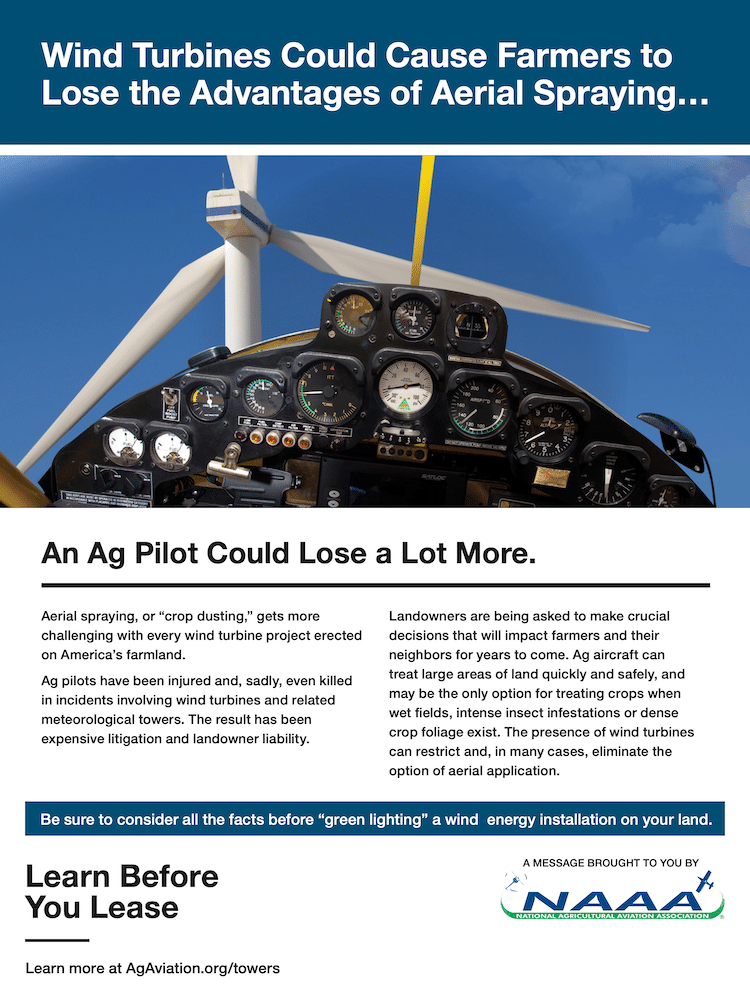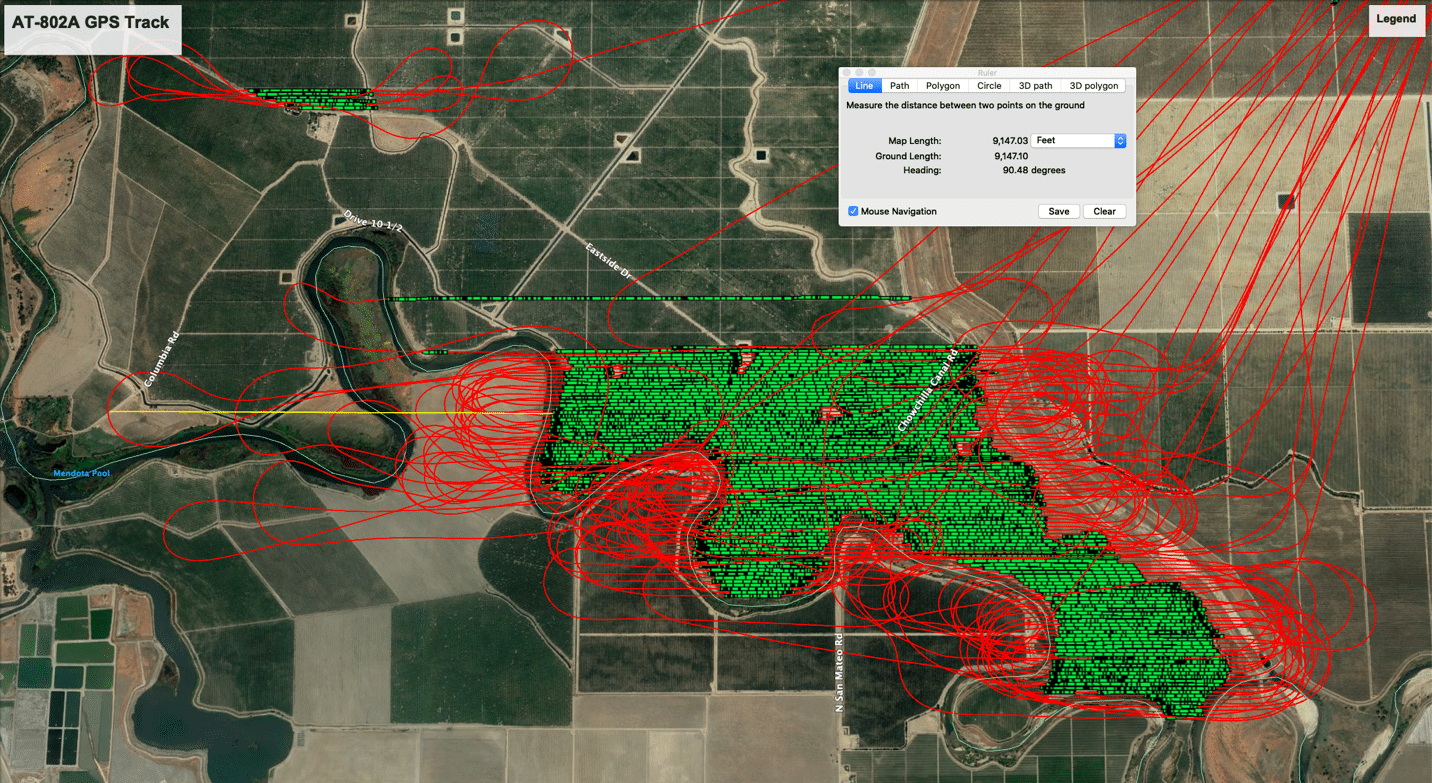NAAA is concerned the placement of wind turbines and other towers on arable farmland make it difficult and dangerous, if not impossible, to treat cropland in and around their vicinity for larger ag aircraft. These towers’ presence can restrict and, in many cases, eliminate the option of larger and faster forms of ag aircraft to be used in aerial application that are government tested for efficacy and drift, and are instrumental in treating large plots of cropland to quickly nourish crops and eradicate the pest pressures they face. NAAA encourages anyone considering leasing their cropland for towers used for wind energy, communications or other uses to think seriously about the potential upsides and downsides to farmers and these aerial applicators before signing an agreement.
The above is not intended for publication. NAAA requests that should any party desire to publish, distribute or quote any part that they first seek the permission of the Association.



